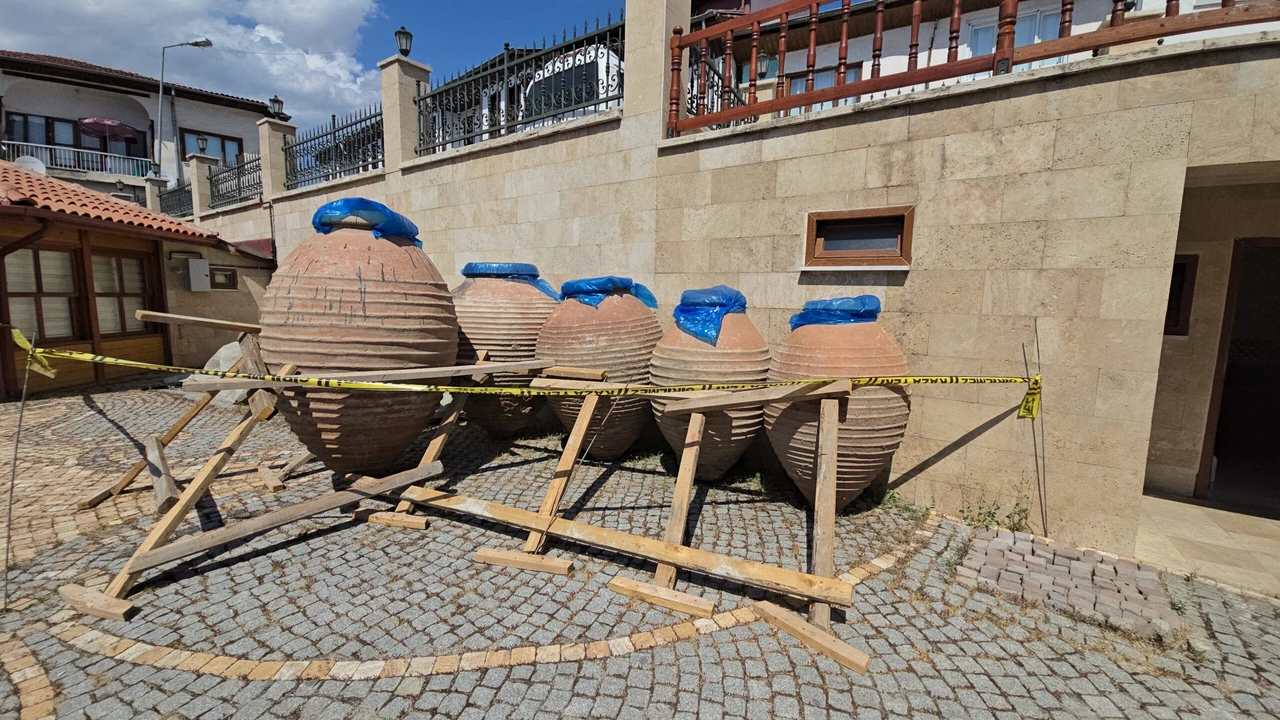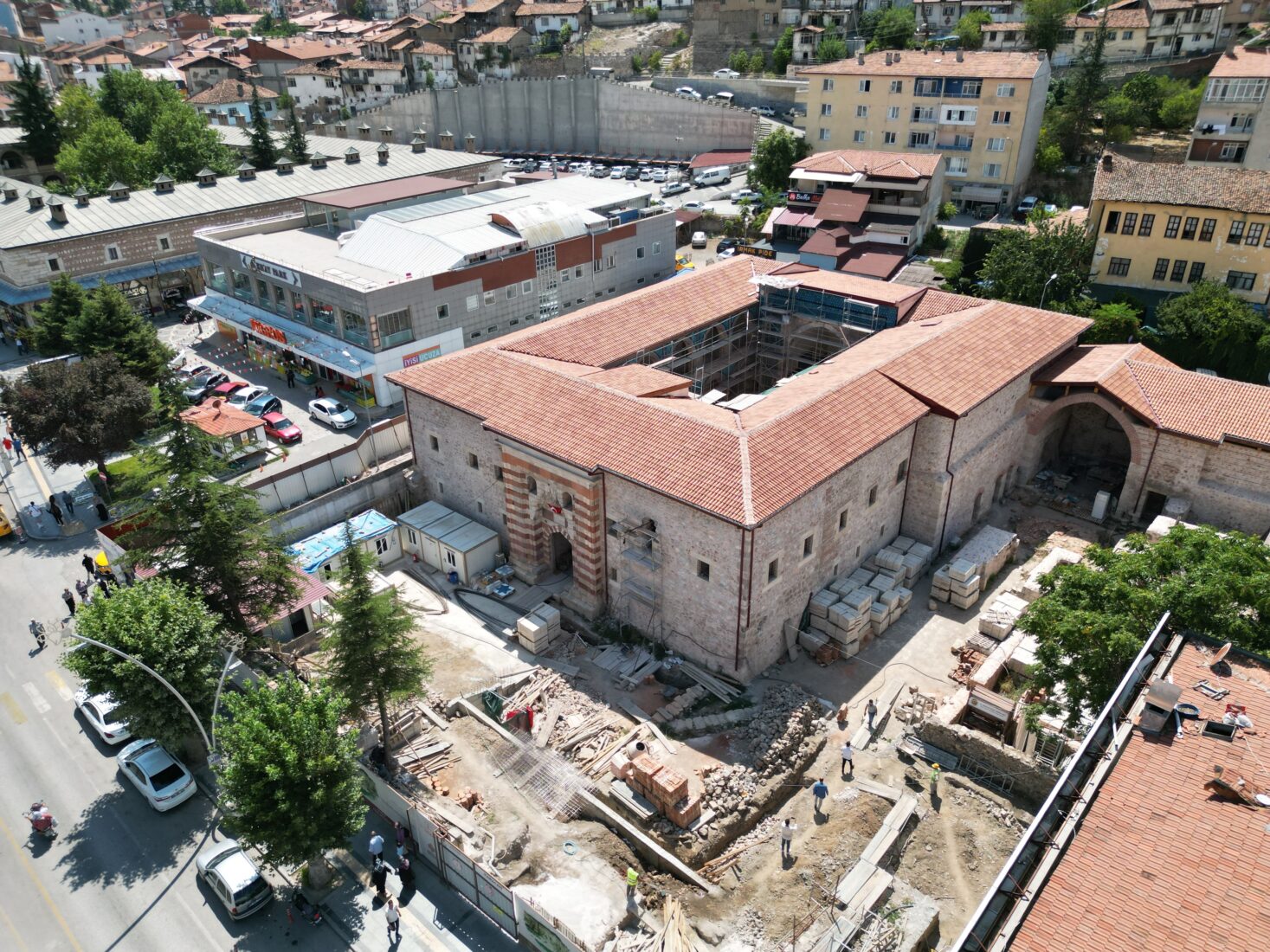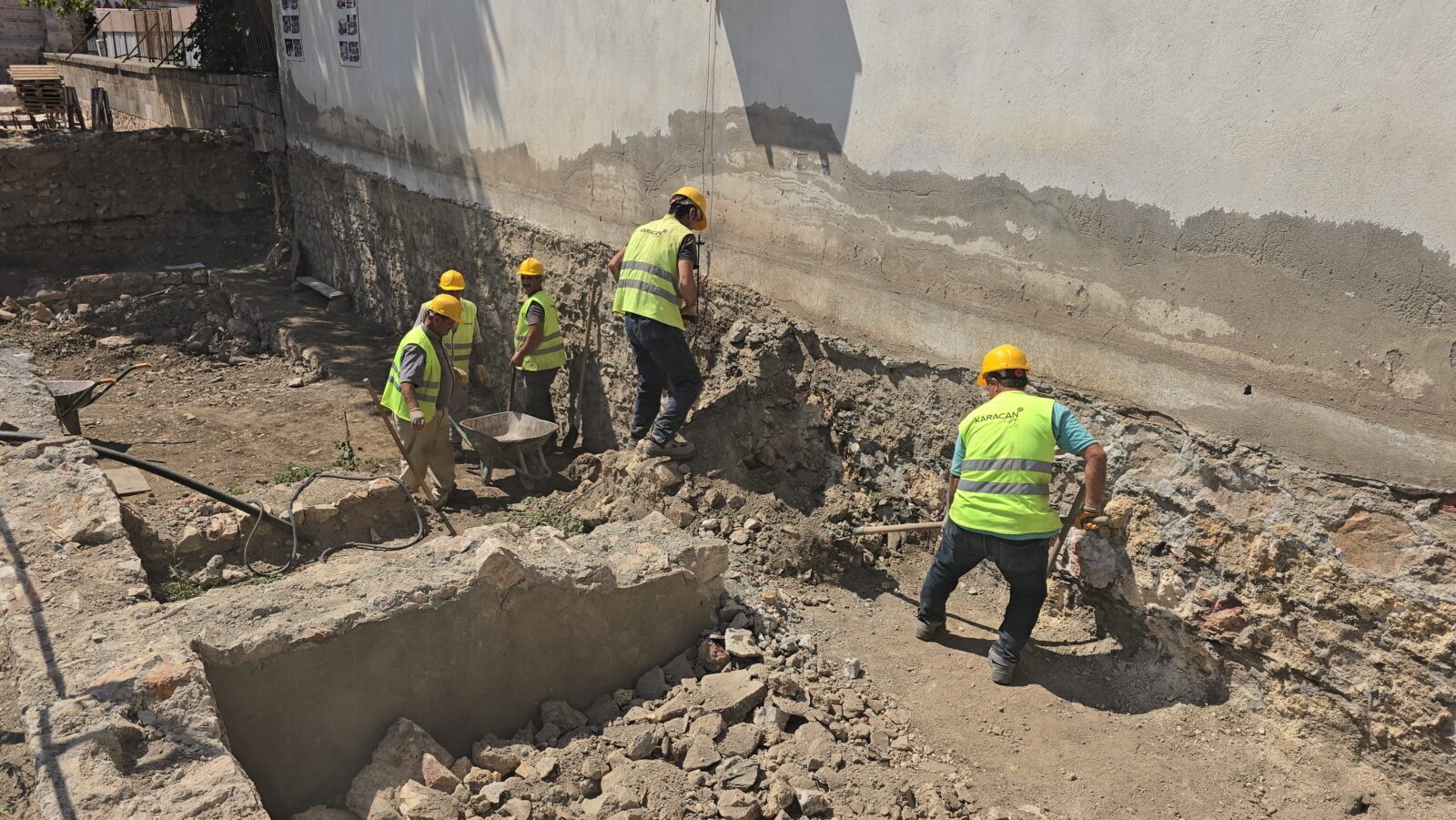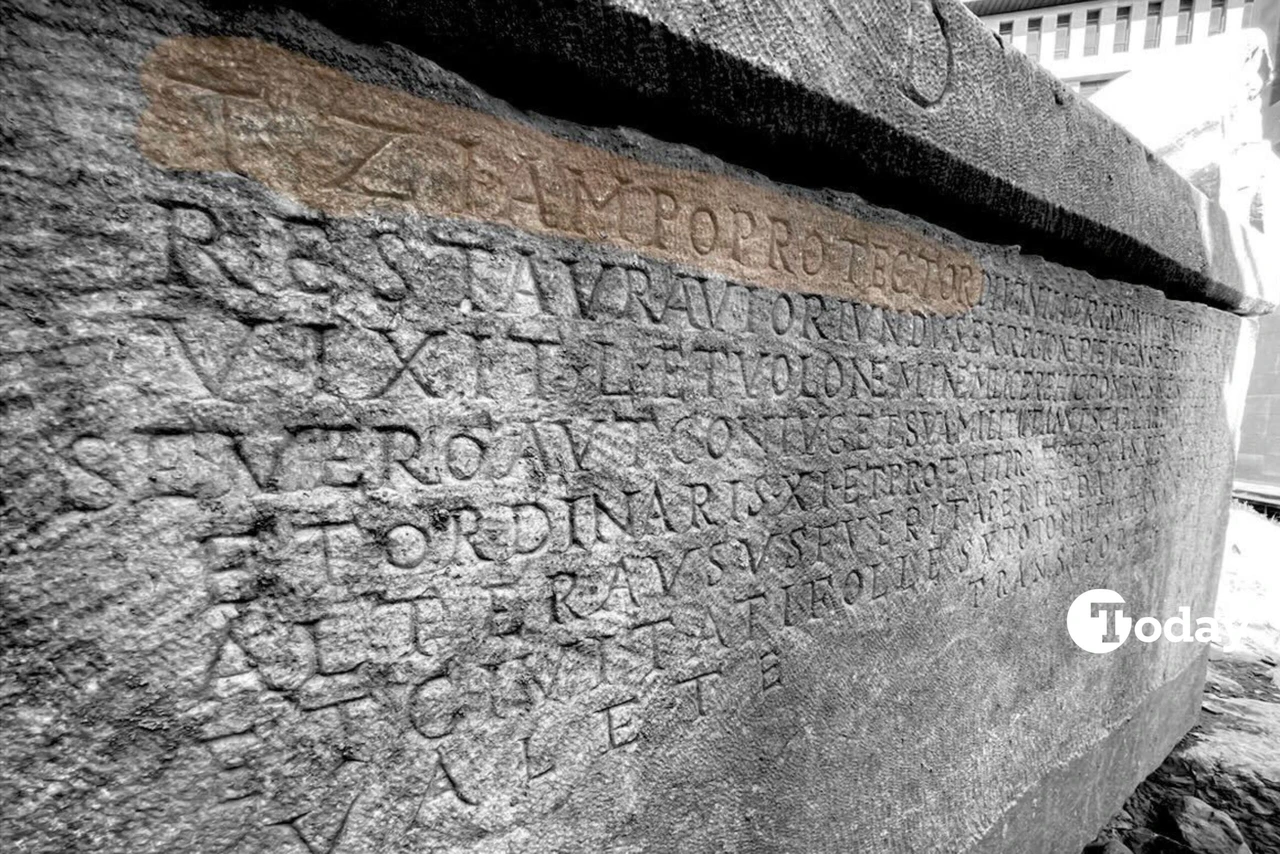Major restoration reveals Ottoman-era storage jars at Tokat’s Gok Madrasa
 During restoration of the Gok Madrasa in Tokat, 6 storage fars from Early Ottoman period were unearthed, Türkiye, September 15, 2024 (IHA Photo)
During restoration of the Gok Madrasa in Tokat, 6 storage fars from Early Ottoman period were unearthed, Türkiye, September 15, 2024 (IHA Photo)
The historic Gok Madrasa in Tokat, an architectural gem built in 1275 by Muineddin Pervane Suleyman, is undergoing an extensive restoration process.
Known for its distinctive two-story design, open courtyard, and turquoise tiles, this architectural marvel of the Anatolian Seljuk era has served various purposes throughout its history, including as a madrasa, asylum, and tomb.
It later became the Tokat City Museum and is now being meticulously restored to its original glory.

Discovery of Ottoman-era storage jars
During the restoration work, which includes excavation in the madrasa’s garden, six large storage jars from the Ottoman period were uncovered.
These jars, which were used for storing oil and dry goods, will be exhibited in the Musluaga Mansion garden once the restoration is complete.
The discovery of these jars provides valuable insights into Tokat’s historical practices and continues to shed light on the region’s past.

Historical significance of storage jars
According to Sebahattin Erdogan, the Regional Director of Foundations in Tokat: “The jars, believed to date back to the Early Ottoman period, were uncovered during a six-month excavation conducted under museum supervision.
These jars, made of fired clay, feature elaborate decorative patterns, including thick grooves and rosette embellishments.
The jars will be preserved in the Tokat Mevlevi Culture and Foundation Works Museum garden and will be displayed in the Musluaga Mansion garden once the exhibition platform is completed.”

The ongoing restoration and the unveiling of these historical artifacts highlight Tokat’s rich cultural heritage and the continued importance of preserving historical sites for future generations.
The Gok Madrasa’s restoration and the forthcoming exhibition of the Ottoman-era storage jars are set to enhance the historical narrative of Tokat, offering a glimpse into the daily life of the past.



